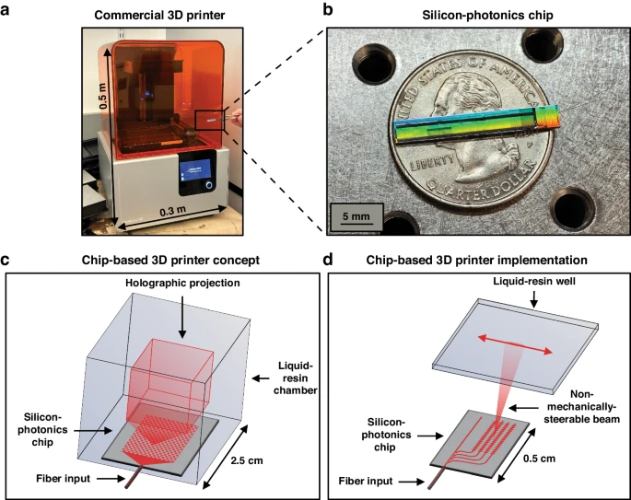
Researchers from MIT and the University of Texas at Austin have demonstrated the first chip-based 3D printer, potentially revolutionizing the 3D printing landscape. At present it is a novel device, small enough to fit in the palm of a hand, features a single millimeter-scale photonic chip that directs reconfigurable beams of light into a resin, which then cures into a solid object when struck by the light. This new technique bypasses the bulky mechanical systems used in traditional 3D printers, making the technology more portable and accessible.

The chip-based printer leverages silicon photonics and photochemistry to function. It uses a tiny array of optical antennas to steer a beam of light into the resin, which rapidly solidifies upon exposure. In a proof-of-concept demonstration, the researchers successfully 3D-printed various two-dimensional patterns, including the letters "MIT," in seconds. The team envisions future versions of the printer to emit 3D holograms, curing an entire object in one step, thereby speeding up the printing process even further.

This technology could have far-reaching applications, from creating custom medical components on-site to enabling engineers to quickly produce prototypes in the field. According to Jelena Notaros, the lead researcher, this development could fundamentally change the concept of 3D printing, making it a handheld and portable process. If you like to know more about it check out the original research paper.

